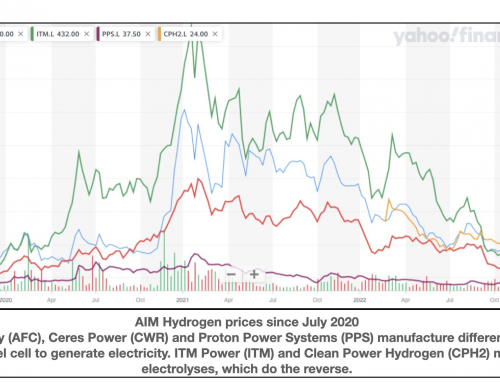By Barney Smith
It is perhaps relevant to note that “De-carbonisation by 2050” took 25 pages of explanation (Greenbarrel: Part I of 12 April), whereas “the Energy Security Plan”(Part ll) took 84 pages. Could it be that the voters care more for security of supply today than for de-carbonisation by 2050?
At all events, most of the key judgements are in the introduction, which strives to bring together the various different, not to say contradictory, aspects of energy policy. It starts by talking of “….aiming for a doubling of Britain’s electricity generation capacity by the late 2030s”, but without pointing out that such an increase in capacity is independent of how it is achieved; a doubling of coal-fired capacity would still be a doubling of capacity.

Powering up Britain: Energy Security Plan (www.gov.uk)
The same paragraph goes on to state “we remain absolutely committed to maximising the vital production of UK oil and gas as the North Sea basin declines.” A few words conceal a major dilemma: how quickly will this decline occur? Will the North Sea still be as strong an influence as it is today in ten years time? in twenty? in thirty? For these apparently simple calculations will involve billions of pounds of investment each. Will the decisions be left to the market? Does it’s past record inspire confidence? But, if not the market, then who?
Whoever it is, it does not mean that we need to redefine the “clear and consistent set of strategic objectives…” which has been behind the various energy papers to have been issued by the Government in the last few years. Apparently, we have always wanted secure, low cost, low carbon energy, but maybe we didn’t realise that we wanted it.
“Demand for oil, gas and other fossil fuels will decline but they retain a crucial role…as critical transition fuels, key to ensuring secure energy supplies……We must take the necessary steps to ensure we can rely on the supply of gas and oil, whether from domestic production or from importing these fuels”. But there is a clear distinction between gas as a transition fuel and gas as a continuing security of supply asset on the grounds that it is less polluting than coal. as some tried to argue at the last COP
“How much energy we use and the ways in which we use it are essential components of energy security……our strategy to increase [the] supply of low-carbon energy is dependent on enhancing our strengths on wind, solar and nuclear power generation, alongside hydrogen production and carbon capture, usage and storage.”
That is the end of the introduction. There follows a page of “Our key commitments.” which mostly look to the future. It is hard to argue against “We will set up Great British Nuclear…..” though we might take issue with the subsequent claim: ”Backed with the funding it needs”. Similarly it will be for others to judge whether the launch of the Floating Offshore Wind Manufacturing Investment Scheme and it’s price tag of “up to £160 million” is good value for money. I would need convincing.
There follow six chapters entitled respectively “Decisive action for this winter and next”; “Enhancing Security of Gas Supply”; Energy Efficiency and Clean Heat”; “A Future of Cheap, Clean and British Energy”; “Markets and Affordability”; and “Delivery Timelines.” All this makes for a dense and lengthy read.
Inevitably actions between now and the likely date for the next election loom large, but “Powering Up Britain: Energy Security Plan” constitutes a worthwhile read for those who want to know where the Government currently think we are going, or want us to think we are going.





